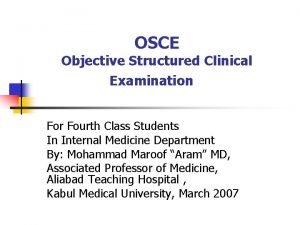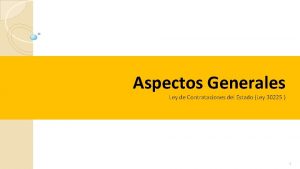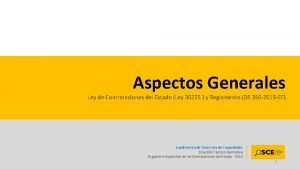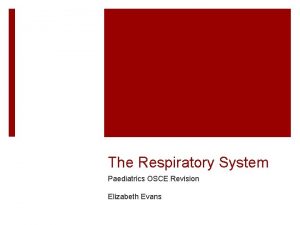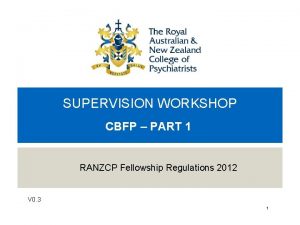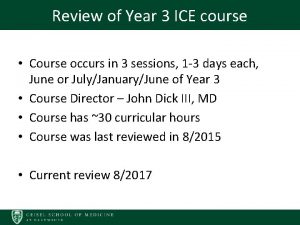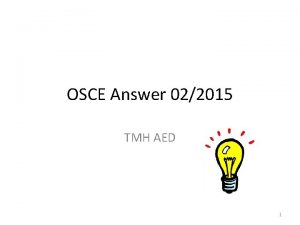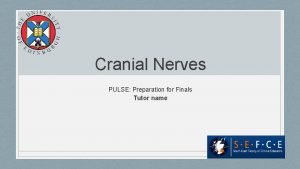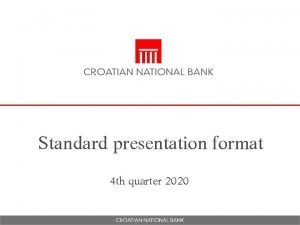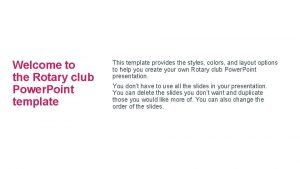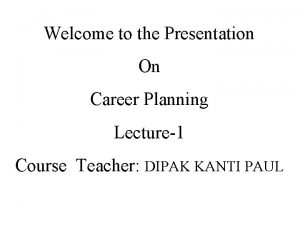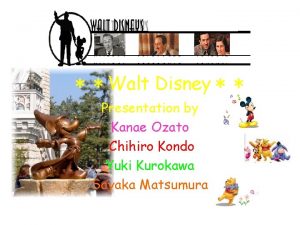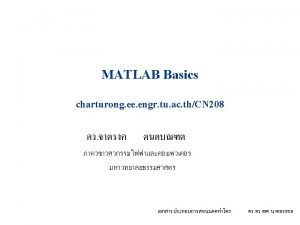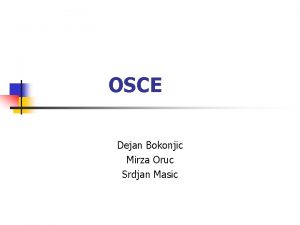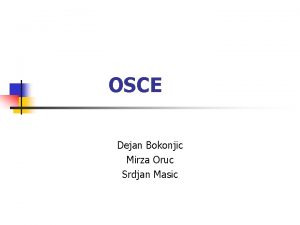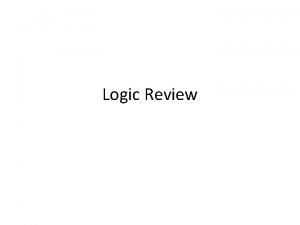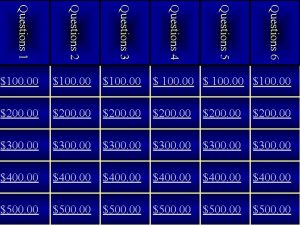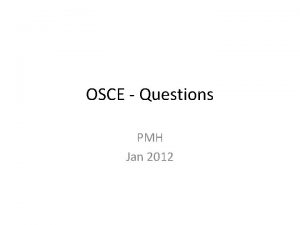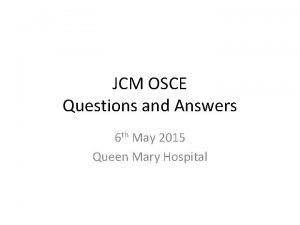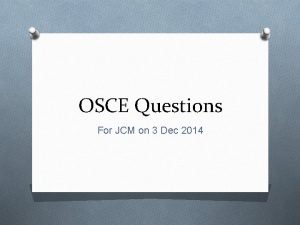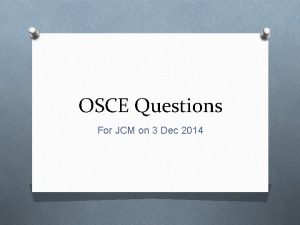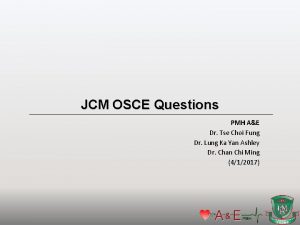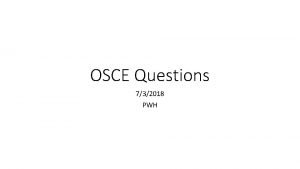OSCE Presentation RTSKH OSCE format 4 Questions 10












































- Slides: 44

OSCE Presentation RTSKH

OSCE - format 4 Questions. 10 points each.

Case 1 30 year old lady Requested by a friend to binge drink in order to exchange for a loan 1 bottle of whisky, 1 bottle of champagne, and red wine Vomited multiple times Called 999 by 7 year old son In cubicle, too drunk and weak to provide history

Case 1 BP stable Pulse 103 E 3 V 3 M 5 Afebrile Alcohol smell Chest clear Abdomen soft and nontender An ECG was taken

Case 1 - ECG

Case 1 Q 1 Besides sinus tachycardia, list 4 ECG features seen. (2 marks)

Case 1 Q 2 A. B. What is the diagnosis? (1 mark) Name 4 blood tests you would consider to conduct as related to the above diagnosis. (2 marks)

Case 1 Q 3 Give your management to the patient. (2 marks)

Case 1 Q 4 While the patient is being monitored and was under treatment, she suddenly collapsed. Cardiac monitor rhythm strip showed:

Case 1 Q 4 A. What is the rhythm diagnosis and mechanism behind it? (1 mark) B. What is the specific treatment? (2 marks)

Case 2 A 42 years old lady complained of twisting injury to her left ankle after jumping from a rock about 1 meter from the ground during hiking Managed to walk immediately but called GFS later because of increasing pain No other injury complained Examination showed tenderness and swelling over the medial and anterior aspect of left ankle X-rays of her left ankle were taken

Case 2 Q 1

Case 2 Q 1 Describe the x-rays findings. (1 mark)

Case 2 Q 2 What is the significance of this fracture? (1 mark)

Case 2 Q 3 Name 2 clinical tests you may want to perform? ( 2 marks)

Case 2 Q 4 What mark) other view of the left ankle you may order? ( 1

Case 2 Q 5 Radiography of what other region you may also want to take? ( 1 mark)

Case 2 Q 6

Case 2 Q 6 What is the name of this kind of fracture? (1 mark)

Case 2 Q 7 CT scan of left lower leg was performed. Describe the CT findings. (1 mark)

Case 2 Q 7

Case 2 Q 7

Case 2 Q 8 Name the 2 important ligaments that were injured according to the CT findings. ( 2 marks)

Case 3 Male 84 Hx of HT Accidentally fell backward in HK Stadium, down 2 -3 steps of stairs On arrival, E 1 V 1 M 5, BP 134/84 mm. Hg P 86/min, RR 18/min, Sp. O 2 100% Pupils 4 mm equal sluggish response to light Large hematoma with wound over posterior scalp CT brain was performed

Case 3

Case 3

Case 3

Case 3 Q 1 Give 4 significant CT findings. (4 marks)

Case 3 Q 2 You decided for intubation. A. What precaution you have to consider while performing intubation? (1 mark) B. What is the critical value of monitoring parameter to prevent hyperventilation? (1 mark)

Case 3 Q 3 Name 4 mode of bedside clinical investigations you may consider for this patient. (0. 5 marks x 4)

Case 3 Q 4 What prophylactic measures you may consider for this patient? (2 marks)

Case 4 A 50 years old gentleman went to play paragliding. When he was about to land, he lost his balance and sustained hyperplantarflexion injury to his right ankle then landed onto his left shoulder. He complained of severe pain over his right ankle and left shoulder. He was not able to walk as his right ankle was clearly deformed. He was able to move his left shoulder, although there was tenderness over his left acromioclavicular joint.

Case 4 Q 1

Case 4 Q 1 What is the diagnosis? (1 mark) What is the classification system to the above injury? (1 mark) What mark) is the normal width of the ACJ in adults? (1

Case 4 Q 2 Name 2 other views of the shoulder you may also want to order if fracture of the coracoid process is suspected. (2 marks)

Case 4 Q 3 X-rays of patient’s right ankle and foot were taken.

Case 4 Q 3

Case 4 Q 3

Case 4 Q 3 Describe the radiological findings. (1 marks)

Case 4 Q 4 You proposed performing closed reduction to his right ankle under procedural sedation, and propofol was the agent you had chosen. What is the normal dosage of propofol you will give? (1 mark) Name 2 parameters you would like to monitor during the procedure? (1 mark)

Case 4 Q 5 Under adequate sedation and correct technique, you tried to perform closed reduction of his right ankle for the patient. However the procedure was unsuccessful. What is the likely cause? (1 mark)

Case 4 Q 5

Case 4 Q 6 What is the diagnosis with respect to the condition in his right ankle? (1 mark)

Thank you
 Rtskh
Rtskh Rtskh
Rtskh Paediatric history osce scenarios
Paediatric history osce scenarios Osce medical
Osce medical Osce data interpretation
Osce data interpretation Osce documentation centre in prague
Osce documentation centre in prague Richter hernia
Richter hernia Difference between osce and ospe
Difference between osce and ospe Osce komprehensif adalah
Osce komprehensif adalah Osce
Osce Osce
Osce Procedimiento de selección osce
Procedimiento de selección osce Dnacpr osce
Dnacpr osce Cornyebacteria
Cornyebacteria Ranzcp guidelines
Ranzcp guidelines Ice osce
Ice osce Sgarbossa criteria
Sgarbossa criteria Cancerous mole signs
Cancerous mole signs Cranial nerve osce
Cranial nerve osce 5cm labor
5cm labor Vertex presentation
Vertex presentation Standard presentation format
Standard presentation format Sales presentation format
Sales presentation format 4 jenis karangan
4 jenis karangan Digital access survey
Digital access survey Contingency questions/cascade format
Contingency questions/cascade format How to make a testable question
How to make a testable question Direct question
Direct question Example of factor isolating questions
Example of factor isolating questions Negative yes no question
Negative yes no question Texting games
Texting games Work in pairs discuss these questions
Work in pairs discuss these questions Yelp case study presentation
Yelp case study presentation Research project proposal presentation
Research project proposal presentation World university of bangladesh
World university of bangladesh Wirtinger presentation
Wirtinger presentation Wireless presentation tco
Wireless presentation tco Iso 9001:2015 ppt
Iso 9001:2015 ppt Smart grid presentation
Smart grid presentation Rotary templates
Rotary templates Career plan presentation example
Career plan presentation example Welcome to our presentation
Welcome to our presentation Welcome to india presentation
Welcome to india presentation Walt disney presentation
Walt disney presentation Vlsi ppt presentation
Vlsi ppt presentation



